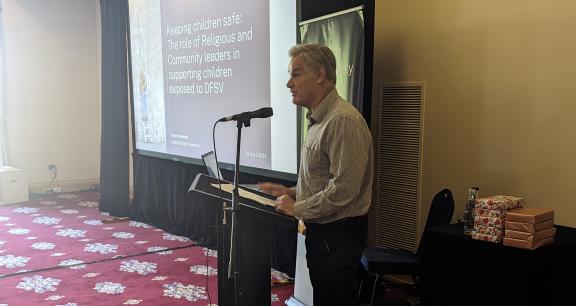Protecting children by supporting at-risk families – Children’s Guardian update
In April I was able to be part of several initiatives which reinforced my view of the central role of family and domestic violence in so many of the harms that can come to our children.

The data is clear, as shown in the Australian Child Maltreatment Study released in 2023, which identified exposure to domestic and family violence as the most significant category of child maltreatment impacting children in Australia.
Last week, I participated in the Stronger Together roundtable for religious and community leaders on domestic, family and sexual violence held in Newcastle and hosted by the Women’s Safety Commissioner, Dr Hannah Tonkin.
The event brought together religious leaders and service providers to discuss how religious and community leaders can work with services to strengthen local responses to domestic, family and sexual violence, along with opportunities for capability building.
For our work at the Office of the Children’s Guardian, we will continue to support and collaborate with other government agencies and the non-government sector in this important area, including supporting better integration of domestic and family violence issues across the service systems.
My team has also been working together with the CHRISTIE project led by Domestic Violence NSW with the University of Melbourne. This new project will employ a child-centred practice model, known as ‘Safe & Together’ which originated in the United States and has become internationally respected for working with families impacted by domestic violence.
While this model has already been adopted by different organisations and practitioners in Australia, the CHRISTIE project intends to extend its reach through a collaborative approach with selected local government areas in NSW.
Another area of growing concern indicated by the Australian Child Maltreatment Study is the substantial increase in recent years of child sexual abuse by other adolescents.
Before wrapping up this month’s update, I want to make a quick mention of a productive discussion I had with Dr Robyn Miller, CEO of MacKillop Family Services, about their innovative work in this area, through their Power to Kids program developed by MacKillop in partnership with the University of Melbourne. The program aims to strengthen prevention and responses to harmful sexual behaviours and dating violence for young people and sexual exploitation.
Following very promising early outcomes in residential care settings, the initiative is being adapted to pilot in schools. I will have more to share with you on this topic in a future update.
Steve Kinmond OAM
Children's Guardian
